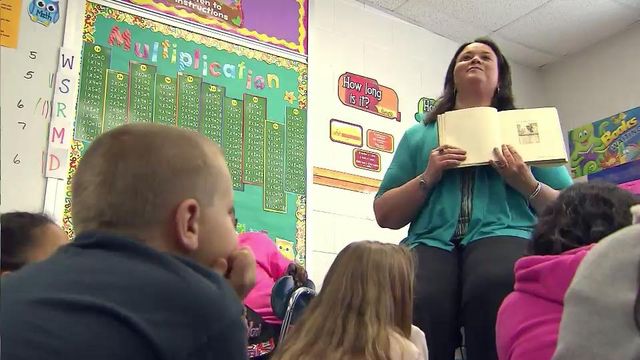PHILIP PRICE: The truth about public school funding
Thursday, April 13, 2017 -- Today we have fewer classroom teachers in K-12 to staff our classrooms and serve 101,640 more students than we did at the start of the Great Recession. Public school enrollment then was about 1.4 million and is now more than 1.5 million. We have less teacher assistant funding, fewer guidance counselors, social workers, nurses, and less funding for instructional supplies and textbooks.
Posted — UpdatedThere has been a lot of discussion over the last year related to how public schools use state funds for kindergarten through third grade classroom teachers. Some state senators continue to ask:
- What did local school districts do with the money we sent them to reduce class size?
- Why are they holding art and PE teachers’ jobs hostage for their (school districts) misallocation of classroom teacher funds?
Frankly, the questions are mostly rhetorical. Today we have fewer classroom teachers in K-12 to staff our classrooms and serve 101,640 more students than we did at the start of the Great Recession (the 2008-09 fiscal year). Public school enrollment then was about 1.4 million students and is now more than 1.5 million. We have less teacher assistant funding, fewer guidance counselors, social workers, nurses, and less funding for instructional supplies and textbooks. Here are some facts:
- School districts are using their K-3 classroom teacher funding according to legislative requirements as they have since 1985 to:
- Hire English and math teachers.
- Hire art, music and physical education teachers to provide instruction as mandated in the state’s Basic Education Program. There isn’t any separate state funding for these special subject-area teachers.
The answers, when examining the details, aren’t quite what some of those critical legislators would like us to believe.
It is important to note that overall state funding has never recovered to the pre-Recession (FY 2008-09) level. While the General Assembly has addressed K-3 classroom teaching funding in recent years, the full impact has actually been a cut in overall K-12 classroom teacher spending:
As detailed above, the General Assembly increased classroom teacher funding in grades K-3 by $131 million since FY 2011-12. However, during the same period, the legislature cut K-12 classroom teacher funding by $286.4 million. The reality is that school districts were left with $155 million less to hire more classroom teachers to meet the instructional needs of our students.
The General Assembly never fully funded the Basic Education Program while adding and changing many of the class size ratios and requirements. At the same time, the allowance of a class size target that is higher than the classroom teacher allotment ratio has remained the same for over 32 years. The allotment ratio must be below the specified class size requirement to offer a full program.
Over the years, the General Assembly allowed the required class size to shift beyond what is outlined in the Basic Education Program. That flexibility has enabled school districts to hire art, music, and PE teachers to meet the instructional requirements in the Basic Education Program without receiving any specific state funding to hire these kinds of teachers.
While there might be some school districts that may have made bad choices related to how they target their state teacher funding, they have been forced to operate with insufficient funding. They try to focus what funds they do have on what will help their students.
Today the reality is that they have fewer teachers to work with and less support funds for the classroom.
Every day, our local school system administrators, principals, and teachers come to work to improve the lives of our most valuable state resource, our students.
Our senators would be better off if they stopped trying to “expose” fraud and abuse that isn’t there and recognize that schools and students need art, PE, and music teachers.
School districts should be able to use their teacher allotment to hire art, music and PE teachers the same way they have since 1985. Otherwise, the legislature should provide additional funding to hire and pay these teachers.
Legislators should focus on making sure our public schools are given the additional resources they need to properly educate their students rather than trying to find local shortcomings that do not exist.
Copyright 2024 by Capitol Broadcasting Company. All rights reserved. This material may not be published, broadcast, rewritten or redistributed.





